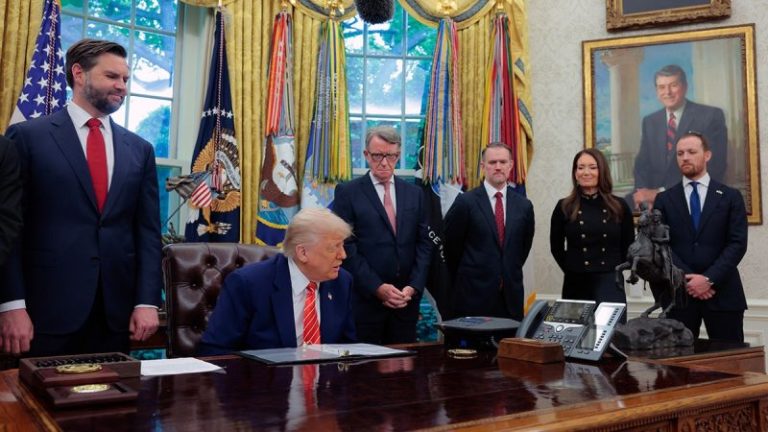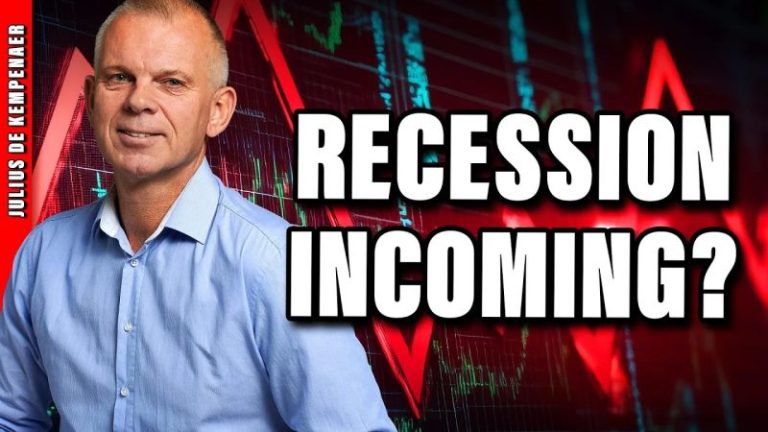President Donald Trump and his administration inked a major trade deal with the U.K. Thursday, and closed the week gearing up for trade talks with China over the weekend.
Details of the specific trade plan with the U.K. are sparse, but the deal keeps the existing 10% tariffs in place against U.K. goods while removing some import taxes on items like steel and cars.
‘With this deal, the U.K. joins the United States in affirming that reciprocity and fairness is an essential and vital principle of international trade,’ Trump said Thursday. ‘The deal includes billions of dollars of increased market access for American exports, especially in agriculture, dramatically increasing access for American beef, ethanol and virtually all of the products produced by our great farmers.’
The deal is the first historic trade negotiation signed following Liberation Day, when Trump announced widespread tariffs for multiple countries April 2 at a range of rates.
The administration later adjusted its initial proposal and announced April 9 it would immediately impose a 145% tariff on Chinese goods, while reducing reciprocal tariffs on other countries for 90 days to a baseline of 10%. China responded by raising tariffs on U.S. goods to 125%.
Trump also shed some insight into trade negotiations with China, given that Treasury Secretary Scott Bessent is scheduled to kick off trade negotiations with China in Switzerland Saturday.
‘Scott’s going to be going to Switzerland, meeting with China,’ Trump told reporters Thursday at the White House. ‘And you know, they very much want to make a deal. We can all play games. Who made the first call, who didn’t make them? It doesn’t matter. Only matters what happens in that room. But I will tell you that China very much wants to make a deal. We’ll see how that works out.’
Here’s what also happened this week:
Meeting with Canada’s prime minister
Trump also doubled down on his interest in expanding the U.S. during a Tuesday visit with Canada’s prime minister, Mark Carney.
Trump regularly has said he wants Canada to become a U.S. state, and has discussed acquiring Greenland and the Panama Canal for security purposes. However, the matter of Canada isn’t open to negotiation, Carney said.
‘Having met with the owners of Canada over the course of the campaign the last several months, it’s not for sale,’ Carney said at the White House Tuesday. ‘Won’t be for sale ever, but the opportunity is in the partnership and what we can build together. We have done that in the past, and part of that, as the president just said, is with respect to our security, and my government is committed for a step change in our investment in Canadian security and our partnership.’
While Trump acknowledged that Canada was stepping up its investment in military security, he said, ‘Never say never’ in response to Canada becoming another state.
‘I’ve had many, many things that were not doable, and they ended up being doable,’ Trump said.
Meeting with ballet dancer freed from Russian prison
Trump also met with Russian-American ballet dancer, Ksenia Karelina, at the White House Monday. Karelina faced a sentence of 12 years in a Russian penal colony for treason in 2024, but the Trump administration negotiated her return to the U.S. during a U.S.-Russian prisoner swap in April.
‘Mr. Trump, I’m so, so grateful for you to bring me home and for (the) American government. And I never felt more blessed to be American, and I’m so, so happy to get home,’ Karelina said in a video posted by Trump deputy assistant Sebastian Gorka on April 11 upon her return to the U.S.
Karelina, a resident of Los Angeles who was born in Russia, was arrested in 2024 during a trip to visit family in Yekaterinburg, Russia. Russia Federal Security Service arrested her after inspecting her phone and finding a donation to a U.S.-based charity that supports Ukraine.
Fox News’ Emma Colton contributed to this report.










